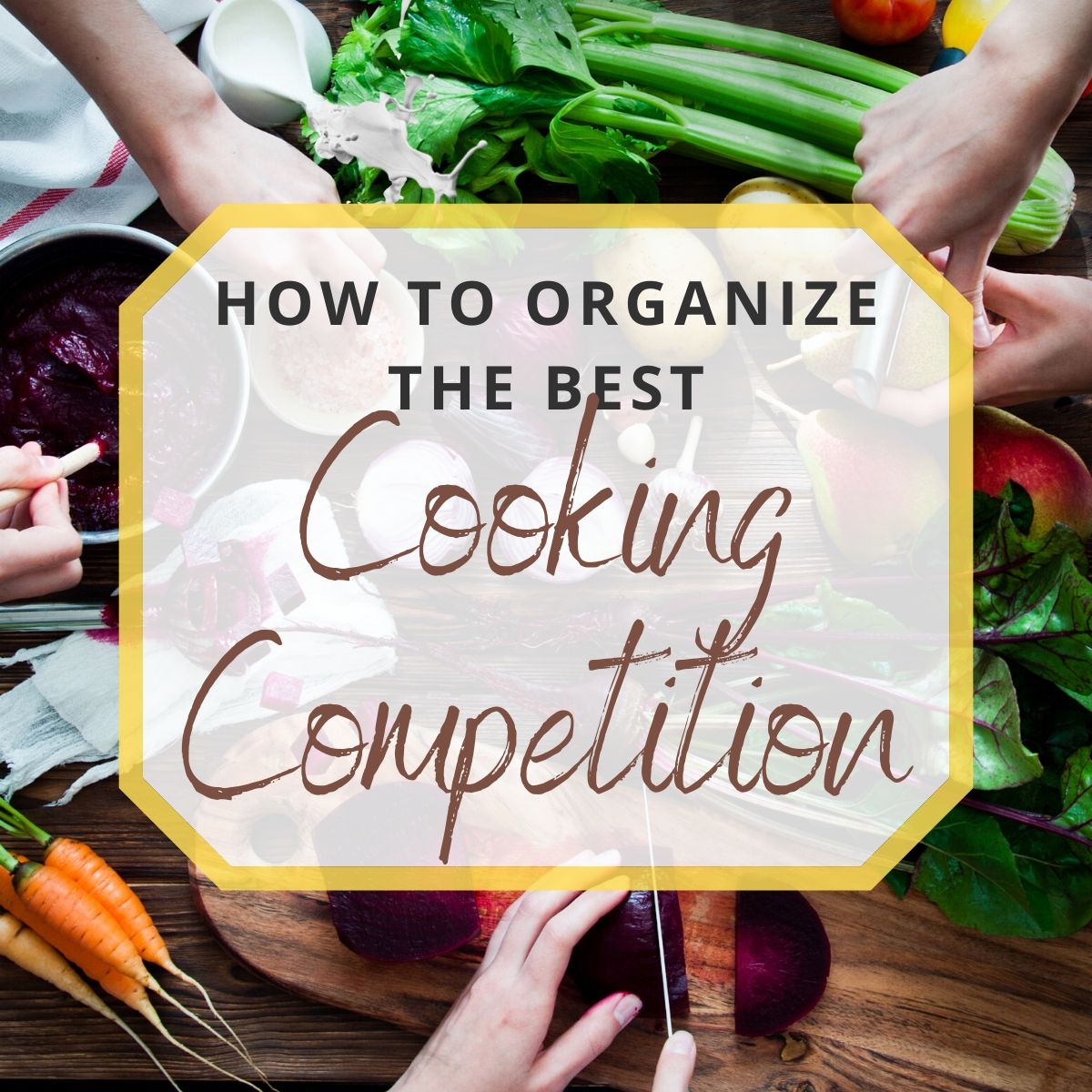Because of the various cooking competition shows nowadays, watching them has become a popular pastime for both aspiring chefs and simple folks with a knack for snacks. On these television programs, hopeful chefs battle it out to prove themselves in front of a lineup of world-renowned judges—as seen in shows like MasterChef, Chopped, Hell’s KItchen, and many more.
Due to all this influence, there are some who create their versions of featured dishes, as they compare flavors, and provide feedback as if they were judges themselves. But, whoever said these cooking competitions were reserved only for the pros?
Today, we will be sharing some tips and guidelines on how to organize your own cooking competition. Whether it’s a team-building activity or an actual friendly tournament to try out during family gatherings, here are some key elements so you can have a fun and successful event.
Before you organize your own cooking competition, it’s important to note that there is so much more to this contest than just cooking and tasting. Keep on reading to see what you need to prepare in order to become a note-worthy host.
How to Set Up Rules and Guidelines
Crucial to any competition is a set of rules and guidelines. These ensure that contestants participate in a fair and square playing field with fixed rules or goals they need to attain in order to win.
Here are some of the most common rules and guidelines you can apply when you organize a cooking competition.
Number of Assistants or Team Members
So participants know what they’re getting into, it’s best to establish what kind of competition you’re hosting from the start. Will it be a head-to-head battle against other chefs? Or will it be a group effort to see which team can come up with the best flavors? Let your contestants know right away, so they can immediately strategize and prepare to take the win.
Time Limit
Without enforcing a strict time limit, contestants can cook for as long as they want—and that’s not exactly realistic nor challenging enough for the game to be fun and exciting. Instead, find the right balance between difficulty and practicality, so your contestants can push their limits and give their all.
Ingredients and Limitations
Another large factor to consider for these competitions is the list of allowed and prohibited ingredients for every dish. You can give them a list of grocery items beforehand or simply let them choose from a pre-selected pantry. A great way to do this would be to change up the items per round, so they would have no choice but to maximize their creativity when executing each meal.
Bonus: Equipment Limitations
To make the last set of rounds more difficult, you can specify the only kitchen tools and appliances contestants are allowed to use per dish. Opt for traditional or unconventional methods to cooking certain ingredients, so contenders can really feel the pressure as they cook.
How to Choose a Competition Format
Competition formats are varying contest styles you can follow to carry out specific challenges. More than just being able to execute the dish properly, have contestants work under certain limitations to test their true cooking ability.
Mystery Box
One of the most popular formats, as seen on TV cooking shows, is the mystery box format. With this challenge, chefs are provided one secret ingredient they would have to use when making the dish.
Because of the secret ingredient, only when the timer has begun can players figure out how to utilize it into their dish.
Basket of Assorted Goods
With the assorted basket setup, contestants are given a bunch of meat, poultry, spices, and add-ons at random. From there, they would have to concoct a unique and exciting dish from scratch, using only the ingredients provided. To make it easier, indicate what meal the ingredients are for—whether it will be for breakfast, lunch, dinner, or dessert.
The key is to put together simple and readily available items, which are not typically combined into a single dish. The weirder the combinations of items are, the more challenging it will be for the contestants to figure out.
Pre-Planned Meal
Since cooking competitions are a test of skill, what better way to see who comes out at the top than having the chefs recreate a pre-planned meal? With this format, you can provide them all the ingredients they need, as well as a live demonstration of how to pull off the recipe. You can also give them a step-by-step instruction as an alternative or a supplement.
The crucial part is assigning a complex dish that requires a lot of skill and technique to make their own. It can be a staple meal, with a lot of intricate details, that requires great focus and application of experience.
Elevation
One major reason why some chefs excel in the industry is because of their ability to revamp food staples, and make them their own. This is exactly what this cooking format is all about.
Whether it’s a creamy pumpkin soup or a simple grilled cheese sandwich that your mom used to make, this challenge requires chefs to showcase just exactly what they can bring to the table by upgrading basic dishes. Judges can decide on the winner based on the most innovative spin on timeless classics.
Theme
Depending on when or what time of the year you’ll be hosting your cooking competition, you can always definitely set up a round based on its theme.
WIth this format, you can ask your contestants to create a dish that best represents specific times of the year (or maybe even celebrated holidays). You can also ask them to make a meal out of fruits or vegetables or any ingredient currently in season, and make it as the focal point of the dish.
How to Set-Up Judging Metrics
In order to fairly decide the winner of each round, there must be a criteria to carefully evaluate every essential element to the dish. Below are some of our recommendations to include in your cooking competition’s judging metrics.
Taste
Above any other factor to identifying a winning dish is the taste. This one is what distinguishes a highly-skilled chef from everyone else. This includes depth and richness of flavor, balance, and overall texture.
Presentation
Food presentation is among the list of considerations. This is what determines whether a dish looks appetizing or not. Which is why it should also play a role in the overall judging. Aside from general appearance, presentation also serves as a display of a chef’s artistry and experience in the kitchen.
Creativity
One’s uniqueness and use of creativity is another component to deciding a winning dish. A switch up in textures, application, and recreation of certain elements to the dish is a sign of a star chef who wants to stand out from the crowd.
Adherence to the Theme
Based on the limitations and competition formats you’ve decided on, one’s adherence to the theme or rules should be part of consideration when judging. Regardless of the taste, presentation, or creativity a participant has employed, failure to comply with the rules and guidelines should result in a demerit to remain fair with other participants who did.
Prize Ideas
Once you have decided on your winner, it’s important to find them a memorable token to reward their momentous victory. Here are some ideas you can reward your winning chef or team with.
Trophy
At the top of our list of possible prizes is a trophy. Depending on the budget, you can have one custom-made with your own cooking competition’s logo or a mock-up of a common cooking utensil, like a spatula or a wooden spoon. A trophy like this is definitely one that’s filled with flair.
Medals
If a trophy is too big or too much for this mini-contest, then a medal would also be a great alternative. It’s suitable for teams, and can be made out of steel or cardstock. You can have this one customized to include your competition’s name, or you can personalize this by designing it yourself.
Certificate
Beyond the other two options, here is the simplest and easiest to pull off: a certificate. This one’s just made out of either parchment or cardstock, and can be accomplished within minutes. What’s great about this is that your chefs can include this into their portfolios if they wish to pursue cooking professionally, so they can also put this experience to good use.
Heat Up Your Pans!
There you have it! It doesn’t have to be hard to organize your own cooking competition. As long as you’re well prepared, and you know the key elements to organize a cooking competition, you can rest easy knowing that you’re going to have a fun and fruitful event.
Let’s get cooking, chefs!





